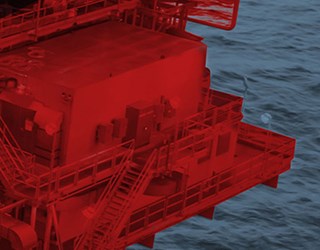NEWS Casing Rotation in Cementing Operations
Casing rotation and reciprocation are widely recognized as best practices in well construction, significantly improving cement placement and zonal isolation. However, the effectiveness of these techniques depends on selecting centralizers that allow casing movement while maintaining optimal standoff. Choosing the right centralization solution is critical to optimizing cementing performance, reducing risks, and ensuring well integrity.
Improved Mud Displacement Even with Minimal Rotation
Even small amounts of casing rotation can significantly enhance mud displacement. Studies have shown that as little as 5 to 10 RPM can break up gelled mud, improving the removal of residual fluids and promoting more uniform cement placement. Rotation helps prevent channeling by agitating stagnant mud pockets and redistributing fluid velocities around the annulus. Additionally, rotation reduces the risk of mud contamination in cement slurry, leading to a more homogenous cement sheath, which is crucial for long-term well integrity. This is particularly beneficial in horizontal and deviated wells, where gravity can cause uneven fluid displacement.
By rotating within properly designed centralizers, the casing creates a more dynamic flow regime, increasing annular velocities and promoting better cement bonding to both the formation and casing. This leads to enhanced zonal isolation and long-term well integrity. Furthermore, improved cement bonding minimizes micro-annulus formation, a key factor in preventing gas migration and ensuring sustained casing pressure control.
Challenges of Rotating the Casing String
While casing rotation offers significant benefits, there are challenges in implementing it effectively:
- Torque and Drag Considerations: Rotating a long casing string, particularly in deviated or extended-reach wells, increases torque and drag forces. Operators must ensure that torque remains within the mechanical limits of the drilling and casing running equipment. Advanced torque and drag modeling tools should be utilized to predict potential issues and optimize rotation parameters before execution.
- Connection Strength and Wear: Threaded casing connections are subject to wear when exposed to prolonged rotation, especially under high torque loads. Some connections are designed for rotation, while others may degrade over time. Selecting the right connection type is critical to prevent premature failure. Premium, high-torque-rated connections should be considered in applications where sustained rotation is required. The use of thread compound with anti-galling properties can further extend connection life.
- Wellbore Conditions: Tight annular clearances, ledges, or high-friction zones can make rotation difficult or increase torque beyond acceptable limits. Using the appropriate centralization and lubrication strategies helps mitigate these issues. In such cases, real-time monitoring of torque and drag using downhole sensors can provide valuable data to adjust operational parameters and avoid excessive mechanical stress.
Optimizing Rotation with the Right Centralizer Type
Selecting the correct centralizer type is essential to facilitate casing movement while minimizing torque and drag. Different centralizers offer unique benefits depending on well conditions.
Centek Bow Spring Centralizers have been field-proven over 20 years to support casing rotation, ensuring smooth movement while maintaining centralization. Learn more
Key Benefits:
- Provide high restoring force for optimal standoff.
- Flexible design allows them to compress in tight spots, reducing friction.
- Well-suited for deviated and horizontal wells where rotation is required.
- They are particularly effective in improving cement coverage in under-gauged or washed-out sections of the wellbore.
- The elastic properties of bow spring centralizers enable them to maintain centralization even in irregular wellbore geometries, reducing the risk of channeling.
Conclusion
Casing rotation, even at low speeds, significantly improves cement placement, enhances mud displacement, and reduces differential sticking. However, achieving effective rotation requires overcoming torque limitations, managing connection wear, and selecting the right centralization solution.
Centek’s bow spring centralizers, proven over 20 years, provide the optimal combination of flexibility and restoring force, ensuring that casing can rotate freely while maintaining effective standoff.
By carefully selecting the appropriate centralizer type and ensuring compatibility with casing movement strategies, operators can maximize cementing efficiency and well integrity, reducing operational risks and long-term costs. Additionally, the integration of real-time torque and drag monitoring systems can enhance operational decision-making, reducing the risk of casing running and cementing failures.
Further reading:
Check out our case studies which showcase how Centek centralizers have been rotated and reciprocated for improved cementation and our new article on the benefits of rotation and reciprocation:

